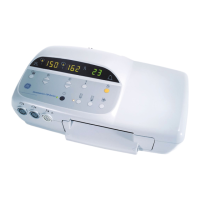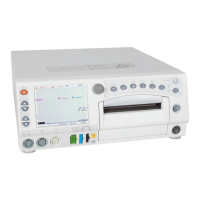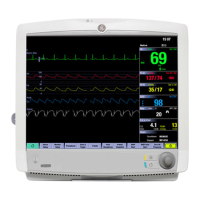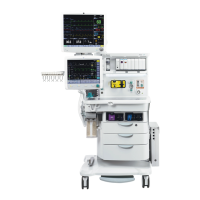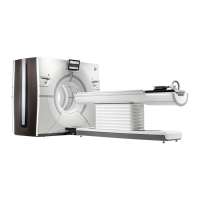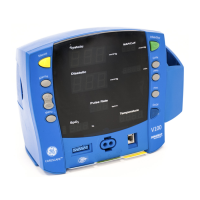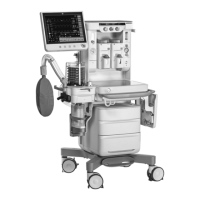Revision B 120 Series Maternal/Fetal Monitor 4-67
2015590-001
Theory of Operation: MECG Board
restore the signal to the original output level before the voltage division at the
isolator’s input. Resistors R116, R118 and potentiometer R117 provide an offset
adjustment from the un-isolated ±10 V references for the output amplifier. The
voltage at the wiper of the potentiometer is buffered by a unity gain non-inverting
amplifier from the last op-amp of U8. The buffered offset adjustment connects to
the output stage through resistor R119.
Low-Pass and Notch Filters
The output of the isolation amplifier connects to a series of filters. The first filter is
a two-pole unity gain 90 Hz low-pass filter consisting of R129, R130, C63, C65, and
an op-amp from U11. This filter is used to eliminate any high-frequency
components generated by the opto-isolator circuitry. The output of the filter is
attenuated by resistor divider R133 and R134 to accommodate the input range of
U15, a switched capacitor notch filter. Using a standard 3.579545 MHz color burst
oscillator crystal (X1), this filter can provide a selectable –40 dB notch at either 50
or 60 Hz by the simple grounding of one pin. The 50/60 Hz selection is done
through Q4 which is controlled by circuitry on the FECG/UA Board. The supplies
for U15 are generated from the ±15 V using two 3-terminal linear regulators VR2
and VR3. The output of U15 connects to another two-pole low-pass filter consisting
of R136, R137, C71, C72, and an op-amp from U11. This is configured as a non-
inverting unity gain filter with a –3 dB point of 56 Hz. The purpose of this low-pass
filter is to remove any switching noise generated by the notch filter. The last stage is
an inverting amplifier with a gain of three consisting of R142, R146, C73, and an
op-amp from U11. This stage restores the signal level lost by the attenuator R133
and R134. Offsets introduced by U15 are also nulled out in this stage through the
adjustable resistor network of R143, R145, R141, and potentiometer R144.

